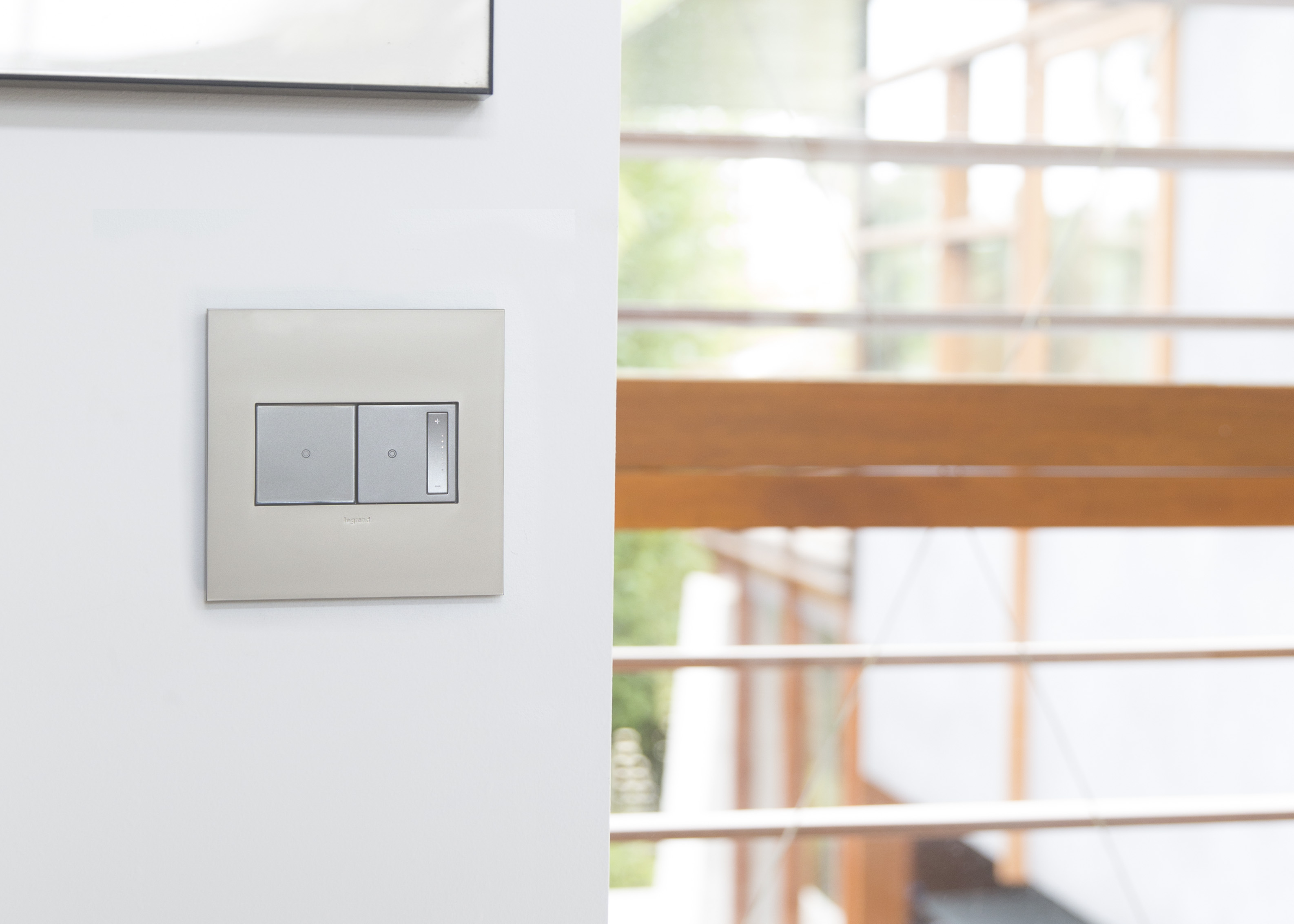Choosing the right dimmer switch
Dimmer switches provide fine control over the light level in any room. They’re an ideal way to invoke a particular mood with illumination or dim the lights for movie viewing. Reducing light levels may also decrease your overall energy costs. The many types of dimmer switches available make it easy to find a solution for almost any application. Most of these products fit standard light switch boxes and are compatible with a variety of light fixtures. There are, however, a few things to take into account when using these controls. Discover how to choose a dimmer switch that’s right for your needs.
Types of Dimmer Switches
The first thing to consider when selecting a dimmer switch is the number of control points in the lighting circuit. If you’re only dealing with a single switch, choose a single-pole dimmer. If you’re adding a dimmer to a circuit with multiple light switches, use either a three- or four-way control that matches the existing wiring. Multi-location dimmer switches let you adjust the light level in a room from multiple locations. Be sure to choose products that are compatible with each other when using this type of dimmer. Consult a professional electrician if you’re not sure which type of dimmer switch you need.
If you prefer a less complicated solution, one of the simplest lighting controls is the plug-in dimmer. These products consist of a switch or slider connected to a short cord and a pass-through wall plug. You can only use them with plug-in lights, but they require no additional wiring.
Advanced Dimmer Features
While many dimmers are simply replacements for standard switches, some have additional control features. Fade-to-off switches slowly dim the light when you turn them off so you can still see as you exit the room. Products with LED indicators show the current dimmer settings, making it easy to set light levels. Wireless dimmers simplify installation by eliminating the need for additional wiring. Some electronic dimmer switches include setting memory. They retain their light level settings in the event of a power outage.
If your home has ceiling fans, consider adding a combination fan and dimmer switch to eliminate hanging pull chains. Dimmers with remotes put lighting controls at your fingertips and are an ideal choice for home theater rooms. Select products that work with remote systems such as Homelink, which let you adjust lights in your home using controls built into your vehicle. Some automated lighting controls such as occupancy sensors also include dimmer switch functions.
Dimmer Switch Power Options
These products include switches that work with both line- and low-voltage light fixtures. Before installing a new dimmer, always check that its voltage rating matches the existing lighting circuit. You’ll also want to ensure the switch can handle the power draw of your lights. Quality dimmer switches include a wattage rating. If you add up the power requirements of all the bulbs in the lighting circuit, the total watts should be less than the dimmer’s rated value. Consult a professional electrician if you plan to install more than one dimmer in a single wall box, since this may reduce their effective wattage rating.
Choosing Dimmer Controls
Dimmers all perform the same function, altering the illumination produced by the attached fixtures, but there are many types of dimmer switch controls.
- Rotary
- These traditional switches have a rotating knob that controls the light level. Usually, twisting the knob all the way down turns the connected fixtures off. Rotary switches are simple to operate, but they don’t remember previously used light level settings. They’re a good choice for rooms with constantly changing illumination needs.
- Slide
- Slide switches are similar to rotary dials, except they use a vertical or horizontal slider button to change the light level. These controls often have a slide-to-off feature, and some include multiple setting stops that let you quickly find preset light level settings.
- Toggle
- Toggle dimmers combine a switch with a separate level control. You can turn the fixture on or off without changing the dimmer setting. Use these switches in rooms where you want set-and-forget dimming control.
- Rocker
- Many of these dimmers are similar to toggle controls. They typically have a paddle-style switch that acts as an on/off control and a separate dimmer adjustment. However, some of these products are standalone lighting controls. Tapping or pressing and holding the up side of the switch increases illumination; down reduces it.
- Tap
- Tap controls use touch pads or switches to provide stepwise control over light levels. Tapping the control surfaces increases or decreases illumination. Some of these products have additional controls that let you establish preset light levels and access them at the push of a button. Others have separate on/off buttons in addition to dimmer switch functions.
- Scene Selector
- These dimmers offer sophisticated control over light levels. You can preset multiple illumination levels and select them at a push of a button. These controls are ideal for rooms you use for varied purposes or spaces with changing natural light levels.
A Simple Lighting Upgrade
Adding dimmer switch functions to an existing lighting system is a simple project that almost any DIY homeowner with a few basic tools can handle. Many of these products fit standard electrical boxes and are straightforward plug-and-play replacements for traditional light switches. As always, observe proper safety precautions when working with electrical systems. Turn power OFF at the main breaker and consult a professional electrician if needed.
Dimmer switches offer excellent control over the lighting systems in your home, making it easy to achieve a particular mood. There are many kinds of dimmers available, including products with sophisticated features such as remotes, faders and fan switches. Put your new understanding of dimmer switch functions and features to good use and add these versatile lighting controls to your home.
Compatible Light Bulbs
While many light bulbs are compatible with dimmer switch functions, some require specific types of dimmers.
Traditional incandescent and halogen bulbs work with most line voltage dimmers, but LED and compact fluorescent bulbs are a different story.
While many LEDs and CFLs are dimmable, they only work with universal dimmer switches that are compatible with their unique power requirements. They may flicker, burn out quickly or not work at all when used with the incandescent/halogen dimmers found in older homes.
Fluorescent dimmers let you control the illumination levels produced by traditional tube-style lights, but the fixtures must have dimming ballasts and rapid-start dimmable bulbs.
Magnetic and electronic low-voltage lights, which are typically used in track, recessed or strip lighting applications, require specific types of dimmer switches that are compatible with the transformers used in these light systems.
Bright Ideas for Dimmers
You now know how to choose a dimmer switch that’s compatible with your home’s light fixtures, but where should you use them? Here are some ideas that may provide some inspiration.
- Take a cue from your favorite restaurant and add a dimmer to your dining room. You can adjust light levels downward to create a comfortable atmosphere for dinner, and turn them up when using the table for other purposes.
- Use a dimmer in the bedroom to set the mood or provide gentle illumination first thing in the morning. You can turn the lights up after you’ve had your first cup of coffee.
- Add a dimmer switch to your outdoor lighting system and adjust light levels on a deck or patio as the sun sets.
- Turn down the house lights in a TV room when watching movies and create a genuine theater-style viewing experience. Just add popcorn to complete the scene.
- Control hall or entry lights with a dimmer and provide constant, low-level illumination at night without wasting energy.

